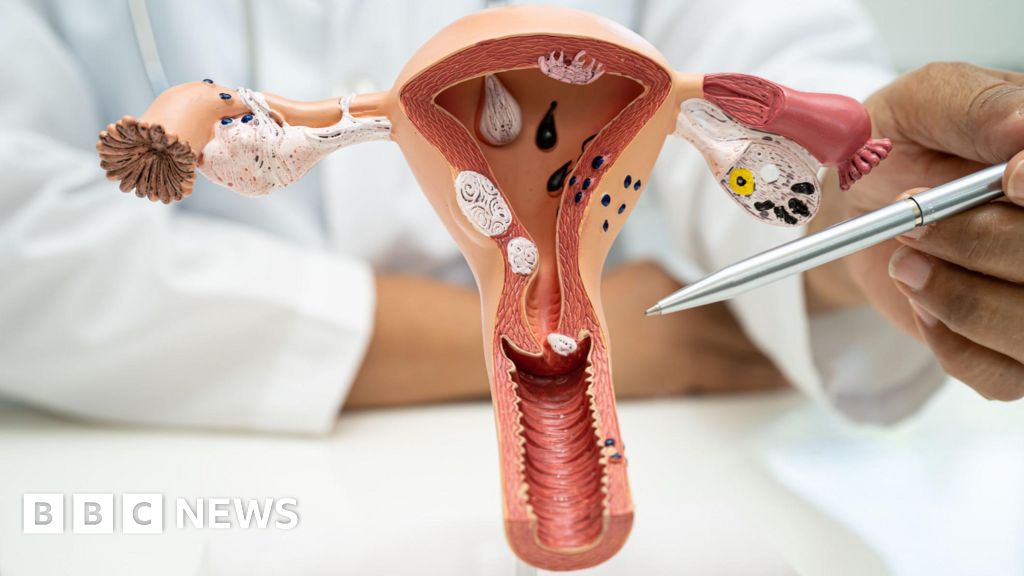Image source, Getty Images
Researchers estimate that more than one million women could receive life-saving cervical cancer screening if self-examination was introduced across the NHS.
The team, from King’s College London, said the results of the self-testing trial were “remarkable” and “empowering for women”.
The kits are similar to COVID-19 test swabs but are longer and are sent to a lab for analysis.
The NHS says the findings are very positive and is considering whether to go ahead with the plan.
There are more than 3,000 new cases of cervical cancer in the UK each year.
The cervix is the small opening that connects the top of the vagina to the bottom of the uterus.
‘Unpleasant experience’
Women between the ages of 25 and 65 are advised to have a cervical cancer screening test (previously called a smear test) every three to five years.
But around 4.6 million women in England – almost a third of those offered a test – don’t show up for one.
“Cervical cancer screening has been declining for the past 20 years,” said Mairead Lyons, a senior consultant on the trial.
“Many women would describe it as an unpleasant experience. [or they are] They’re too busy, too embarrassed, or too scared to actually experience it.”
The YouScreen trial marks the first time that self-testing will be offered as part of cervical cancer screening in the UK.
Women and people with cervixes were offered self-testing kits in one of two ways:
- If a screening test is six months late and you visit your GP for any reason, your doctor will automatically be alerted and will provide you with a kit.
- If a test was 15 months overdue, a kit was sent to their home address.
The kit contains a long cotton swab that you use to swab the inner walls of your vagina for about 20 seconds.
This is sent to a laboratory to be tested for Human Papillomavirus (HPV), which causes most cervical cancers.
If the result is positive, you will be advised to undergo further tests to see if cells in your cervix have started the process of becoming cancerous.
The trial was carried out across five London boroughs in 2021 and 27,000 test kits were provided.
The results, published in eClinicalMedicine, include:
- 56% completed testing administered by their primary care physician
- 13% completed the test mailed to their home
The researchers estimate that if their results were replicated across England, uptake would increase from 69.9% to 77.3%, reaching around one million more women over each three-year testing cycle.
The study also found that self-examination is reaching women regardless of ethnicity or wealth.
“Game changer”
“I’m very excited,” Lyons told me.
“I’ve been in the health service for over 30 years and this is fantastic.”
Dr Anita Lim, from King’s College London, said: “Self-examination has been hailed as a groundbreaking change in cervical cancer screening and now we have evidence in the UK population that it really is revolutionary.”
Self-testing is already available in Australia, the Netherlands, Denmark and Sweden.
Deborah Tomalin, head of screening and vaccinations at NHS England, called the trial results “very promising”.
“The NHS will now work with the UK National Screening Committee to explore the feasibility of rolling this out more widely across England,” she said.
Meanwhile, the HPV vaccine reduces cervical cancer by about 90%.
And Prof Peter Sasieni, who was involved in the self-testing trial, said young women who received the HPV vaccine at a young age may only need to have one to three cervical cancer tests in their lifetime.
No changes have yet been made to the screening programme for vaccinated women, so they are encouraged to attend screening if invited.
But, he added, “Unfortunately, women born before 1990 are less likely to benefit from the HPV vaccine, so regular testing is crucial to protect those who are not vaccinated.”
Main symptoms of cervical cancer
- Unusual vaginal bleeding during or after sex, outside of menstruation, or after menopause, or heavier than normal periods
- Changes in vaginal secretions
- Pain during sexual intercourse or in the lower back, lower abdomen, or between the hip bones (pelvis)


